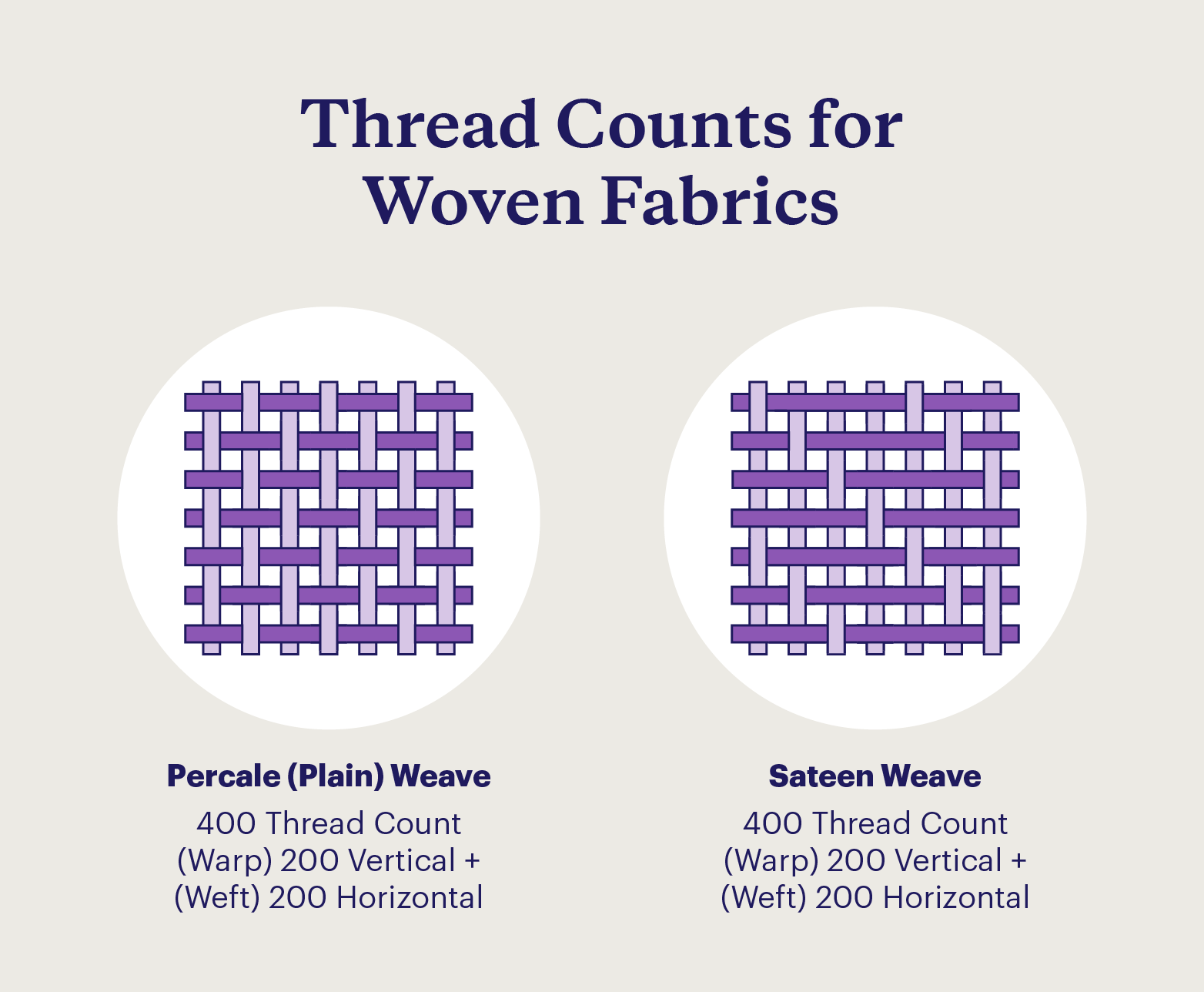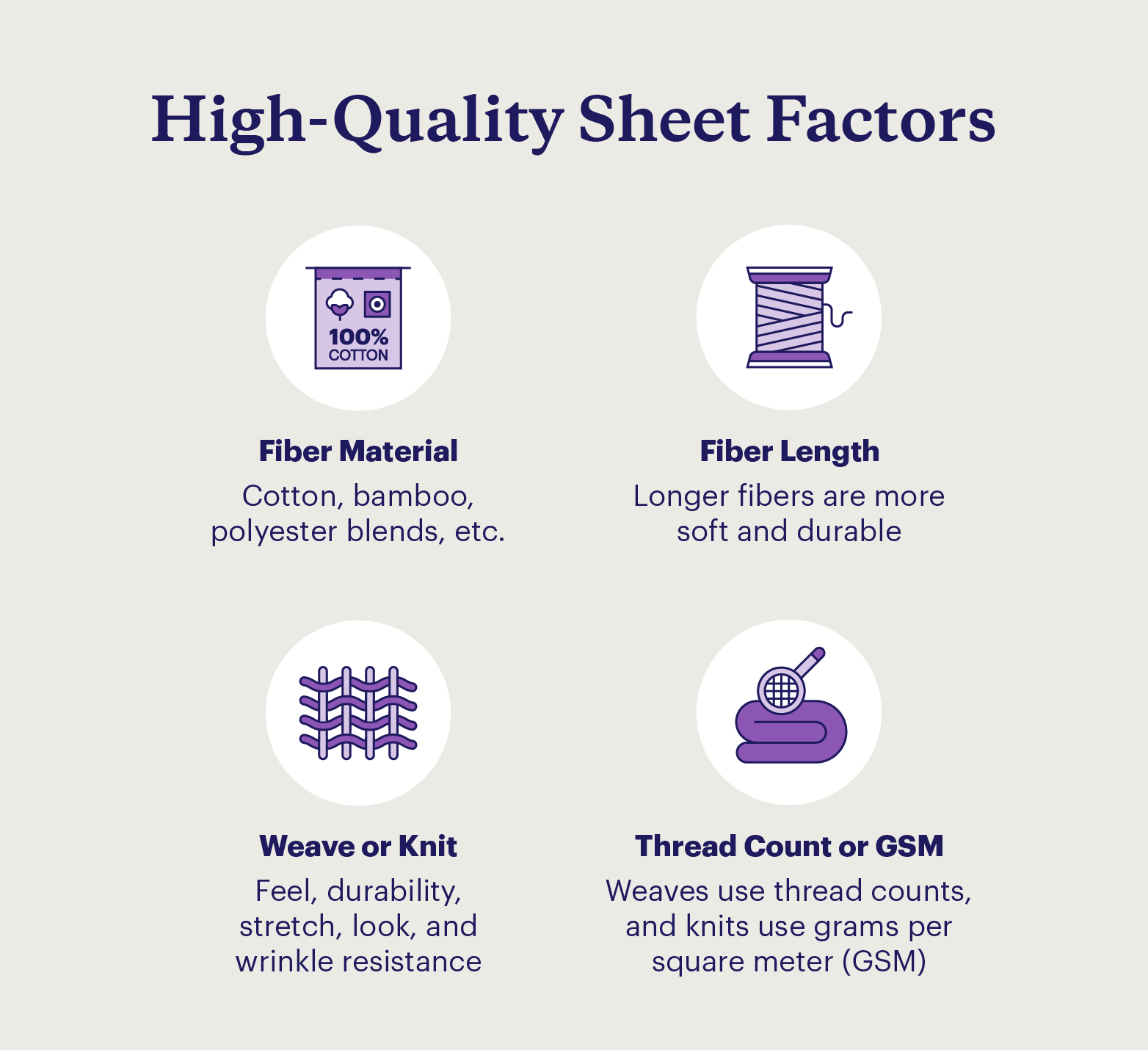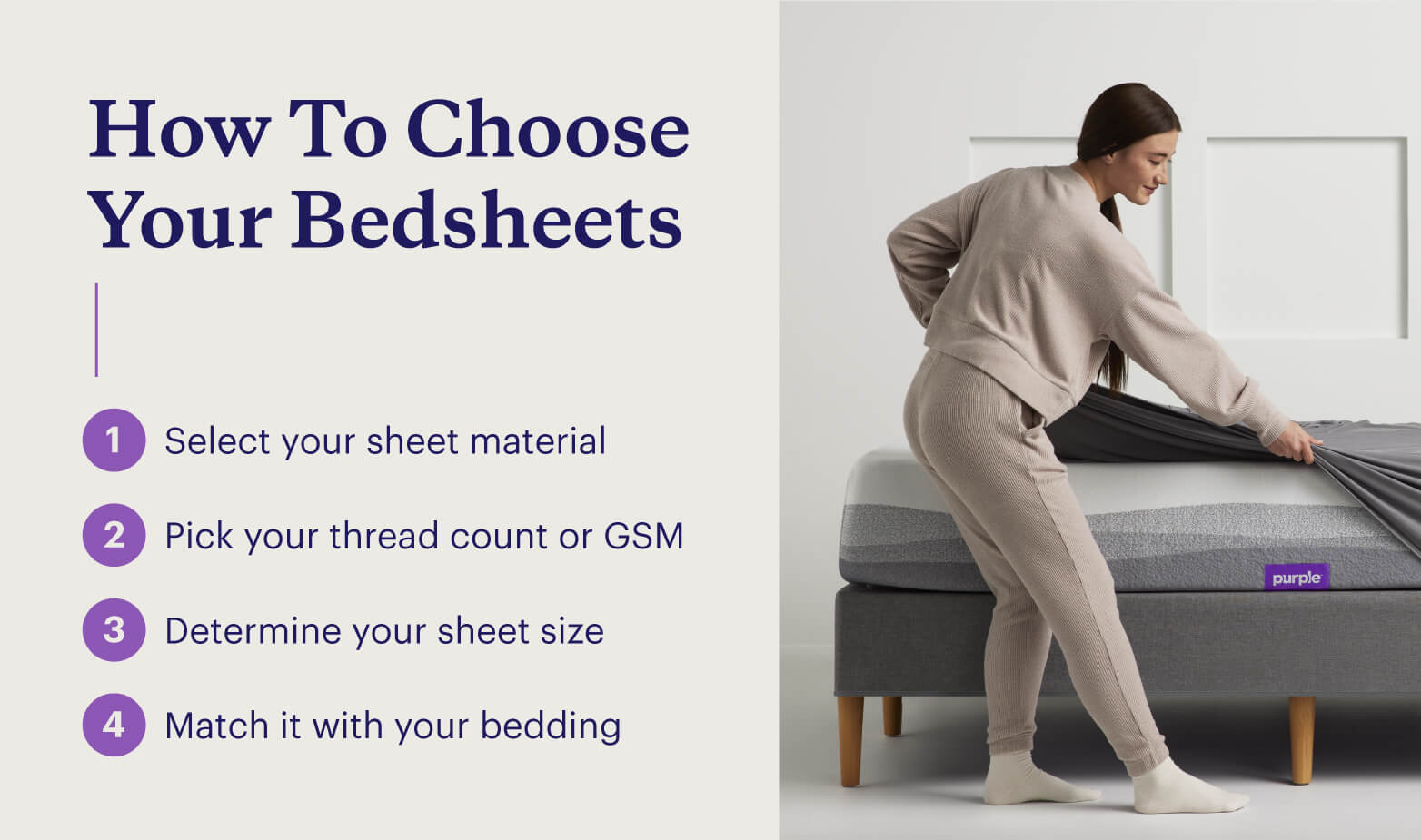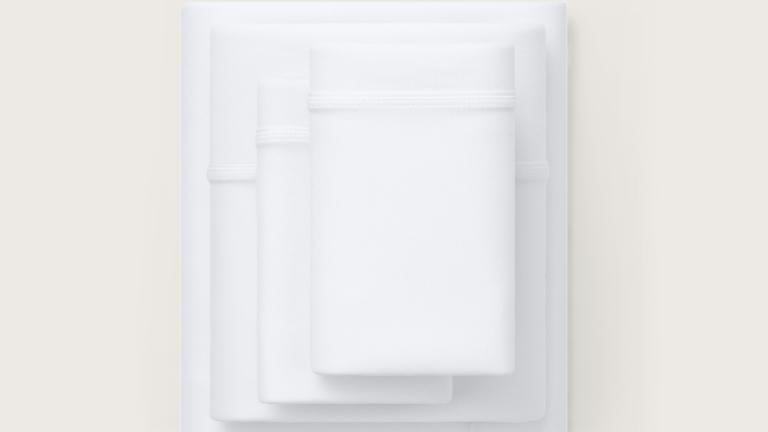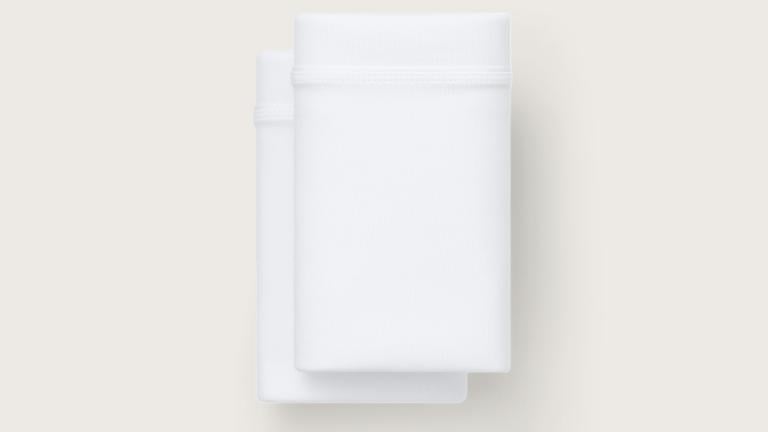
What Is the Best Thread Count for Sheets?
Depending on the material, the best thread count for sheets is between 200 and 600. For example, good cotton sheets have a thread count of 300-600, while good linen has a thread count of 80-150.
When it comes to sleep, sheets are the icing on the cake.
Sheets protect the mattress and give sleep surfaces the desired feel, whether that be silky, cooling, or cozy. When considering different types of sheets, find a set that matches your comfort preference, regulates temperature, and breathes well. The tricky part is knowing what criteria to look for — and what those elements mean. One primary element that can be useful in gauging the quality of your bedding? Thread count.
The best thread count for sheets is between 200 and 600, but that’s only one piece of the puzzle. There are different standards for every fabric, so it’s important to consider other elements like material, fiber length, and weave.
In this post, we'll explain thread count and how it can impact your comfort so you can identify the perfect sheets for you. You don't need to be a fabric expert — but by the end of this post, you’ll have everything you need to know to make the right sheet selection.
What Is Thread Count?
Thread count is a measurement of how many threads there are in a square inch of fabric. It's calculated by adding the number of warp threads (vertical) and weft (horizontal) threads. For example, sheets with a “400 thread count” have 200 warp threads and 200 weft threads.
Many people assume a higher thread count equates to higher quality. The idea behind this common assumption is that thinner and finer threads make fitted and top sheets feel soft and smooth. While this can be true, it’s not always the case.
Many manufacturers use thread count as a marketing gimmick, equating a high thread count with high-quality sheets. To attract customers, some artificially inflate the thread count in order to create the perception of enhanced quality. Don’t fall for the thread count myth — higher is not always better.
What Is the Best Thread Count for Sheets?
While we offer a thread count range that typically offers the best quality sheets, there is no such thing as a “best thread count.” You can find high-quality sheets with thread counts ranging from 200-800. Some sheets have thread counts of 1,000 or higher, but it’s unlikely you will notice the difference.
When asked about the best thread counts, Tasha Martin, Product Manager at Purple, said the following:
“Higher thread count does not necessarily equal higher quality. Many high-quality sheets are in the 300-600 range and use long staple and single pick fiber.”
If a comfortable sleeping temperature is your main concern, you can consider the type of weave. Percale weave sheets provide breathability in the heat, so long as you don’t mind wrinkles. Sateen weave sheets are great for retaining heat in the cold, and they are some of the softest bedsheets.
Many types of high-quality sheet materials don’t have thread counts, including:
- Linen
- Silk
- Jersey
- Flannel
Knitted materials like jersey use grams per square meter (GSM), not thread count. In this case, warmer materials weigh 250 GSM or higher, while cooler, more breathable bedsheets weigh anywhere between 1-250 GSM. Generally speaking, a higher GSM fabric feels thicker and softer.
| Material | Ideal Thread Count |
| Bamboo | 250-500 (often not measured by thread count) |
| Cotton | 300-600 |
| Egyptian cotton | 200-700 |
| Linen | 80-150 (often not measured by thread count) |
| Polyester | 300-500 |
| Tencel | 300+ |
Is a Higher Thread Count Better?
A higher thread count is not necessarily better. Higher counts are often associated with softer sheets, but it’s not a reliable metric. Many businesses artificially inflate thread count. So, using thread counts to make a decision can be tricky.
The first thing you want to consider is material. Materials come with their own level of softness. For example, a low-thread-count silk sheet will often be softer than a high-thread-count cotton sheet.
With a preferred material in mind, you can now consider the weave or knit. The material's construction informs the feel and durability of your sheets. Common sheet constructions include:
- Plain weave: More durable than sateen
- Sateen weave: Softer than plain
- Jersey: Knit, which makes it quite stretchy and durable
Each material and construction has its own measurement for quality. Cotton sheets are usually woven, so they're measured with thread count. Jersey and flannel are knit, so they use GSM instead of thread count to measure the knit quality. In this way, thread count isn’t always important for choosing a high-quality sheet.
“Find the sheet that feels best to you — whether that is buttery and smooth, light and crisp, or warm and cozy. Preferences may change over time or based on the season. Decide which benefits are most important to you to guide your choice,” says Martin.
What Makes High-Quality Sheets?
Many things inform what is considered a high-quality sheet. “The quality of the raw material greatly determines sheet quality,” says Martin. In evaluating quality, you should always start with your material so you know what measurements to use.
Factors to consider when choosing high-quality sheets:
- Fiber material: Common materials include cotton, silk, bamboo, polyester, and blends.
- Fiber length: The longer the fiber, the more soft and durable it is.
- Weave or knit: The weave or knit of a sheet will add to feel, durability, stretch, and wrinkle resistance.
- Thread count or GSM: Woven sheets use thread count and knits use GSM. Sheets made from different materials may vary, but some, like cotton and bamboo, may have comparable thread counts.
- Durability: Durability is a combination of all of the above options. Sateen is less durable than a percale weave, but fiber and GSM will also impact durability.
How To Choose the Right Sheets for You
When choosing the best bedsheets, we all have different needs and preferences. Your “best sheets” are the ones that suit your specific needs.
To determine your needs, ask yourself:
- Are you a hot sleeper?
- Do you have sensitive skin?
- Are you prone to allergies?
- What materials fit your budget?
- Do you want sheets that stretch?
- What size is your bed?
Now, you can use your knowledge of high-quality sheet factors to determine the best sheets for your needs. Next, we’ll walk through the decision-making process.
- Select Your Sheet Material: Hot sleepers may opt for an affordable and breathable material like bamboo, linen, or cotton with a percale weave. People who sleep with pets should try a non-clingy material like microfiber, bamboo, silk, or cotton with a high thread count.
- Pick Your Thread Count (or GSM): Every material has its own best thread count. Do your best to ignore the “higher is better” myth. Sheet materials like bamboo are rarely measured in thread counts, and others don’t use it at all.
- Determine the Right Sheet Size: Mattress dimensions are fairly standardized, except mattress depth. So, make sure to measure your mattress before choosing any sheets. You can avoid disappointment by measuring the exact dimensions of your particular mattress.
- Match With Your Bedding: Choose sheets that match your bedroom’s style. This doesn’t mean buying sheets that match your duvet exactly — you may want to create a contrast in tone. Try to find a sheet set that comes with pillowcases to create a cohesive look.
Thread Count FAQ
What Is Better: 400 or 600 Thread Count Sheets?
This depends entirely on the material you choose. When it comes to linen sheets, there is no difference between a 400 or 600 thread count. Anything above 150 is more than high-quality linen. For cotton, 400 or 600-thread count sheets are both high-quality with minimal differences.
Is 1,000 Thread Count in Sheets Good?
You won’t notice a difference between an 800, 1,000, or 1,500 thread count sheet. Breathability has less to do with thread count and a lot more to do with the material, as some fabrics breathe better than others. For example, a 1,000-thread-count cotton sheet will be cooler than a 1,000-thread-count polyester sheet.
What Thread Count Is Best for Cool Sheets?
More threads per inch of a piece of fabric may mean more material and weight, which tends to mean less breathability. Thread count is only one factor in making a decision.
Natural fabrics like cotton or bamboo tend to be breathable and cool. But you also need to think about the weave or knit. For example, percale weaves provide great breathability, which has nothing to do with the material or thread count.
How Does The Ply Affect Thread Count?
A sheet made with single-ply thread and a thread count of 400 has 400 threads per inch. But a 400-thread-count sheet with two-ply yarn has an 800-thread-count sheet.
Since ply affects thread count, some manufacturers use multi-ply threads to inflate numbers. This gives off the impression of a high-quality sheet, but it's not the case. This is another reason why you can’t depend on thread count alone.
What Is the Thread Count of Hotel Sheets?
Hotels wash and use their sheets every single day. So, they need sheets that are high-quality, durable, and affordable. For this reason, most hotels use cotton sheets with a higher thread count, somewhere between 300-600.
More than thread count, hotels want sheets with a high fiber length to avoid pilling. Hotels usually carry both sateen and percale weave options for a variety of temperatures and feel. In the end, it’s a combination of fiber length, material, thread count, and weave.
Does Thread Count Actually Matter?
Thread count is a useful measurement, but there are many other factors that determine material quality. What is a good thread count for linen is different from cotton, so don’t depend on thread count alone.
The most important thing is first to identify the feel you want. A higher thread count is one quality indicator, but it’s not everything. In fact, some Purple sheets don’t have thread counts because they are knit. While there is no thread count, these sheets provide durability, coolness, and softness that you may have missed should thread count have been your only determining factor.
More to Explore
Level-up your sleep routine with our most-loved products.


